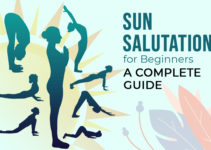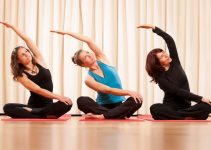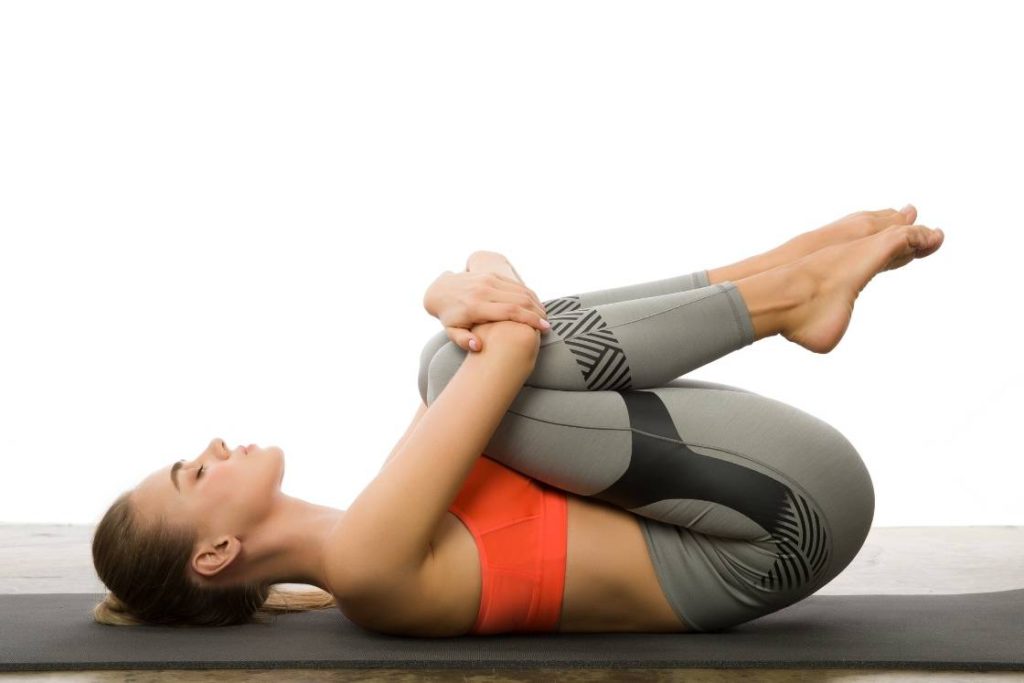
Isn’t it great to pursue rejuvenation internally without doing much but lying down in your comfy bed?
If it’s something that sounds exactly what you are looking for, then apanasana is what you need to try on.
Apanasana is a basic posture performed in the supine position. It is often performed at the end of back stretching poses. However, it has lots of benefits associated with it rather than just relaxing the body.
You just need to lie down on your back squeezing the knees up to the chest. Wrap the arms around the shins and press the spine against the floor. It is as simple as it seems.
Apanasana Meaning
Apanasana is composed of two Sanskrit terms, “apana” meaning “downward-moving life force” and “asana” refers to “pose”.
Apana is one of 5 Prana that signifies the opposite of prana (upward flowing life force). “Prana” is described as a life-giving force, however, “apana” is an “eliminating force”. Due to the eliminating characteristics of this pose, it helps in removing toxins from the body, and hence the name.
The quality of removing toxins makes Apanasana a wind releasing pose. Apanasana helps to create bowel movement in the Vata Dosha body which releases the excess of Apan Vayu. This is why Apanasana is also called pawanmuktasana (gas release pose).
This pose is better known by its English name that signifies the crux of the pose, i.e. knees-to-chest pose.
Practice Guide of Apanasana
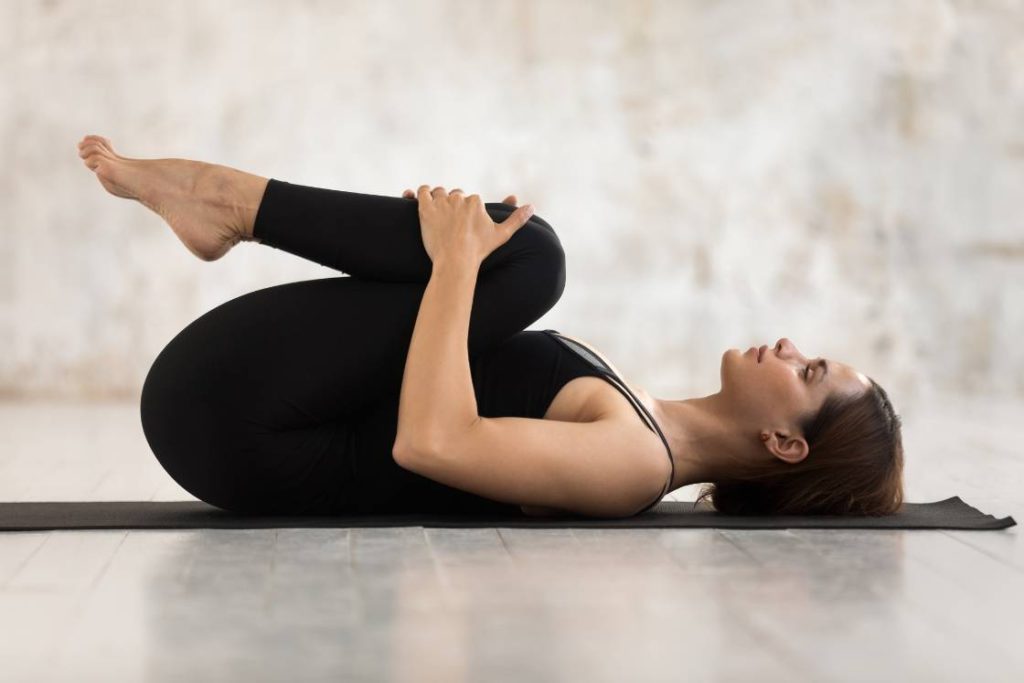
Contraindications
- Do not try apanasana with any injury in the neck, spine, hips, or knees.
- Avoid this pose after the first trimester of pregnancy.
- People recovering from an abdominal surgery must not perform this asana.
- Skip this practice if you are suffering from a hernia.
- Patients with migraines should avoid this pose.
Preparatory Poses
Prepare the body for apanasana by basic stretching lying on the ground. Lifting one leg at a time off the ground gradually increasing its angles from 30° to 60° to finally 90°. This will loosen the muscles of the ankles, thighs, calves, and toes.
Apart from this perform the following poses before apanasana:
- Supine Spinal Twist Pose (Supta Matsyendrasana)
- Half Wind Release Pose (Ardha Pawanamuktasana)
How to Do Apanasana (Steps)
- Lie on your back and bending your knees place your feet on the floor.
- Inhale lifting the feet off the floor drawing the knees towards your body.
- Wrap your hands or forearms around the shins.
- Exhale and squeeze the knees to be pressed against the chest.
- Keeping the neck and shoulders relaxed tuck your chin to chest.
- Hold the pose for a few minutes as long as it’s comfortable.
- Exhale releasing your legs and arms.
- Extend the legs and arms on the floor.
- Relax for a minute and repeat the asana for at least six times.
Follow-up poses
- Reclining Bound Angle Pose (Supta Baddha Konasana)
- Fish Pose (Matsyasana)
- Corpse Pose (Savasana)
Variations
You can apply some of the challenges to this pose to gain more benefits. Try some of these variations to apanasana.
1. Pawanmuktasana
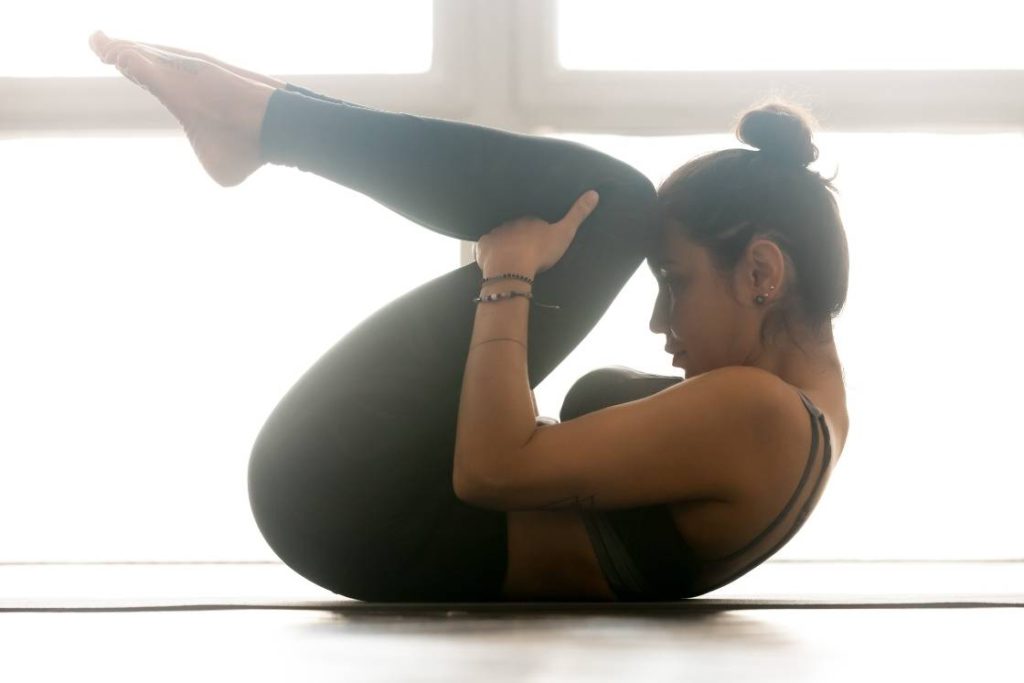
In this variation, after attaining apanasana, try to lift your head and neck. Then, draw the chin in towards the knees. In this variation keep the neck muscles relaxed and the head still.
2. Eka pada apanasana (Half Apanasana)
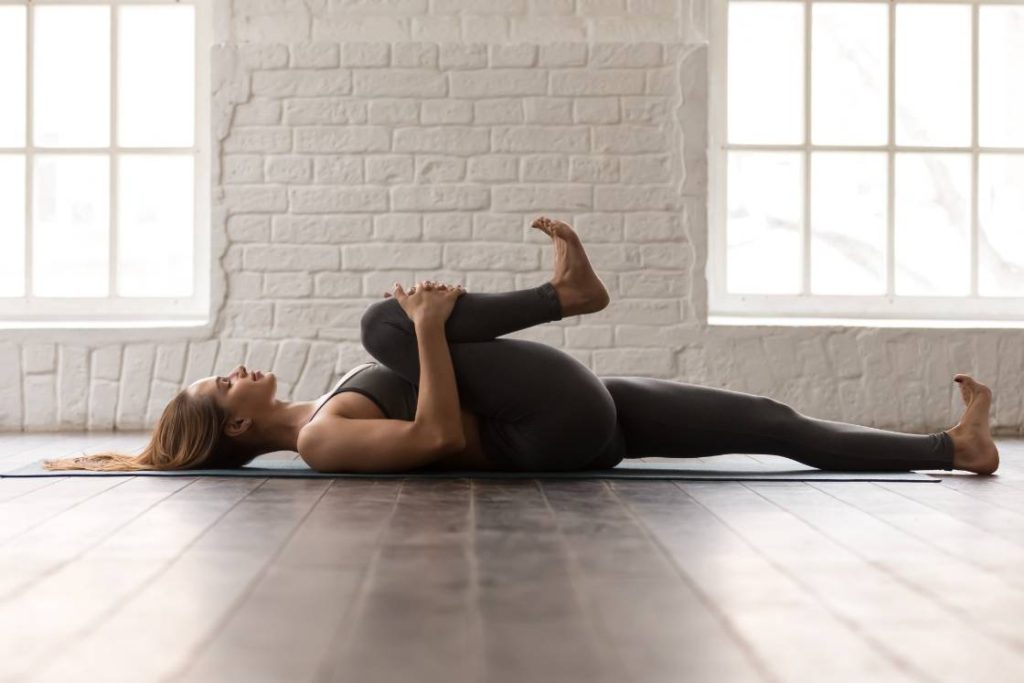
Here, the practitioner lies in the supine pose. Then, brings one leg at a time with bent knee towards the chest. The hands are clasped around the shin while drawing the knee to the chest. Then, it is repeated on the other leg.
3. Apanasana with rocking knees
This is a more dynamic variation of apanasana. It’s very soothing in the case of lower back pain.
Lie on your back bending the knees and place your arms on them. Pull the knees towards the chest lifting the feet and bending the elbows. Then, push the knees away from the body straightening the arms and keeping the feet on the floor. Repeat this back and forth motion of the knee with the help of the arms.
4. Apanasana knees apart variation
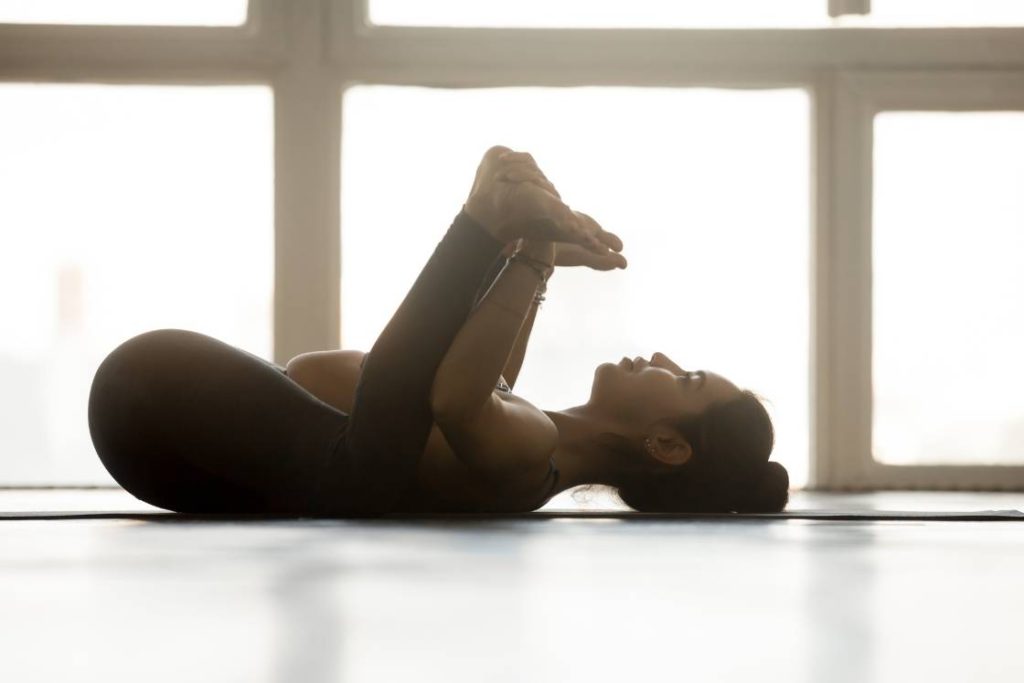
From basic apanasana, keep your hands on each knee with fingers pointing towards the shin. Keep the feet together and separate the knees. Now, pull the knees towards the chest bending the elbows. Hold the pose or keep moving the knees away and close to the chest.
5. Apanasana massaging the back
In this variation, perform the apanasana followed by massaging the back on the floor. Add the crawling of the shoulder blades to the rocking left to right movement of the back.
Therapeutic Applications
- Apanasana helps in alleviating lower back pain. [efn_note] Yoga exercises for lower back pain. https://yoga-sci.eu/wp-content/uploads/2014/06/6-romanov-radak-e.pdf [/efn_note]
- It has the potential to cure constipation or irritable bowel syndrome (IBS).
- It helps to get relief from flatulence, acidity, or any gastric problem.
- Apanasana is also helpful in reducing menstrual cramps. [efn_note] EFFECT OF YOGASANAS ON MENSTRUAL CRAMPS IN YOUNG ADULT FEMALES WITH PRIMARY DYSMENORRHEA https://www.ijmhr.org/ijpr.7.4/IJPR.2019.140.pdf [/efn_note]
- This pose also cures diabetes by stimulating the internal organs like squeezing the pancreas.
- People with high blood pressure also get relief doing this pose.
- It is beneficial in treating cervical spondylitis.
- Therapists recommend knees to chest pose to cure stiffness in the neck, chest, or stiff varicose veins.
- Perform this pose to align and rectify the dropped shoulders.
- Apanasana is a relaxation pose, that soothes the spine leading to the nervous system bringing calm to the body and mind. Hence, it acts as a stress buster. [efn_note] Ten Steps of Stress Reduction: the Intercultural Adapted Version of Training of Stress Reduction with Elements of Relaxation http://bildungsgesundheit.de/10_steps.pdf [/efn_note].
Apanasana Benefits
1. Strengthens the back
In this posture, as the knees are drawn towards the chest, the back muscles experience extreme pressure. Along with the pressure the back is kept relaxed on the floor with an elongated spine. It expands the back muscles and increases their endurance making them stronger.
2. Massages the abdominal organs
The abdomen muscles are also pressurized while holding the posture. It massages and gently squeezes the internal organs. This benefits the body externally by strengthening the abs and anatomically by improving the digestive system.
3. Improves blood circulation
The pressure on the back and abdomen helps to bring the fresh supply of blood into these muscles and internal organs. Also, the active involvement of the legs brings blood supply to the legs and provides relaxation. Thus apanasana helps enhance the blood circulation of the body.
4. Revitalizes the reproductive organs
Along with the abdomen, the pelvic floor muscles are also massaged. It stretches the groins and pressurizes the inner thighs. This produces stress hormones in these regions and improves the blood supply to reproductive organs. Hence, it provides an improved reproductive system.
Conclusion
Start your day with apanasana on your bed’s mattress or the mat on the floor and feel rejuvenated all day long.
It is equally beneficial to get into the pose after having a long hard day. It’s a must-to-do pose to eliminate the fatigue, stress, and toxins out of the body and have good night sleep.

